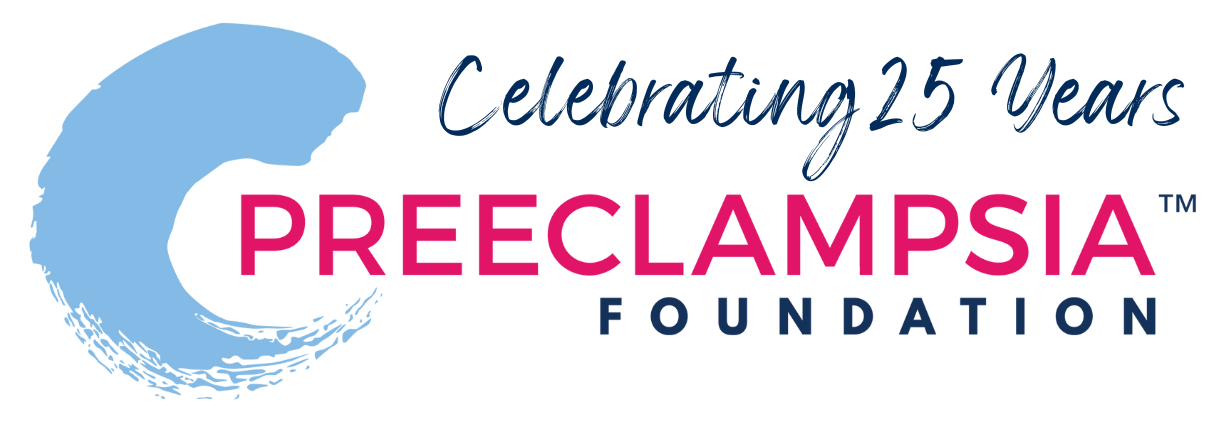
Hospital Guidelines and the Preeclampsia Patients’ Bill of Rights
Hospitals are now expected[1] to follow a standard set of protocols, or practices, to ensure consistent, safe healthcare for every woman, every pregnancy, every situation. These standardized practices are outlined in the Severe Hypertension in Pregnancy Bundle.
What’s a “bundle” and what should I expect from healthcare providers who are following these guidelines?
Patient safety “bundles” – including Severe Hypertension During Pregnancy and the Postpartum Period – outline the most important clinical practices that should be implemented in every maternity care setting. The bundle describes what should be done, leaving the how up to the state or local hospital system. You can think of a bundle as the instruction manual for how doctors, nurses, midwives, and other healthcare providers should recognize and respond to preeclampsia, HELLP syndrome, and eclampsia.
Who developed and who endorses this bundle?
American College of Obstetricians and Gynecologists (ACOG) convened a multidisciplinary group representing all types of providers (e.g., maternal fetal medicine specialists, obstetricians, midwives, nurses), as well as other stakeholders such as patients, fertility specialists, and others, developed this set of best practices. Each of the participating organizations, of which the Preeclampsia Foundation was one, had to review and approve the guidance before the Council issued it.
What can I expect from hospital staff who are trained and utilizing the severe hypertension bundle?
I can expect my blood pressure to be measured accurately.
That means the right size cuff, based on my arm circumference, will be used around my bare upper arm, and I will be positioned in a sitting or semi-reclining position with my arm at heart level and feet flat on the floor, legs uncrossed. I will sit quietly for five minutes before my blood pressure is measured. I will not be positioned on my left side or laying down to try to lower my blood pressure.
I can expect an accurate and immediate diagnosis when severe hypertension or other manifestations of preeclampsia are present.
If my blood pressure is 140/90 or higher (either number) after 20 weeks of pregnancy when my blood pressure was previously normal, and I have protein in my urine or symptoms or lab values2 that indicate wither kidney or liver failure, dropping platelets, fluid in my lungs, headaches, or visual disturbances, I will be considered to have preeclampsia and treated accordingly (see section below on management).
I can expect my severe high blood pressure to be treated within an hour of diagnosis.
Two blood pressure readings within 15 minutes of 160/110 or higher (either number) will be treated with medication, possibly labetalol and/or hydralazine given intravenously (meaning directly into my veins), within one hour. The goal is to avoid a brain bleed or stroke. If I don’t respond to the first medication, alternative medications will be administered quickly.
I can expect to have seizures prevented or, if they’ve already occurred, prevented from occuring again. Seizures indicate a diagnosis of “eclampsia.”
Magnesium sulfate (MgS04) will be given intravenously (into my veins) immediately. I understand that this medication may make me feel woozy and cause hot flashes or blurry vision, but this medication is important to prevent seizures and these side effects are not dangerous to my health. I can expect to have this medication for 24 hours after delivery, or possibly longer if I continue to have symptoms. I can also expect that the necessary medications are stocked and quickly available in the labor and delivery unit so there is no delay in treating me.
I can expect medical staff to have an adequate level of expertise to handle my case or to know when to escalate my care.
I will receive prompt bedside evaluation if I experience critical blood pressures, abnormally rapid heart rate, inadequate production of urine, agitation, agitation, confusion, unresponsiveness, loss of vision, persistent headache, shortness of breath, or oxygen deficiency. Experts in hypertensive disorders of pregnancy may be brought in to consult on my case, or I may be transferred quickly to another hospital that can take care of my baby and me if the hospital does not have the resources or expertise. This is especially true if my condition worsens.
I can expect to receive all the information I need to be an engaged patient partner in my pregnancy, during delivery, and postpartum. This includes emotional/psychological support if the experience is particularly traumatic.
Medical staff will ensure I understand the signs and symptoms of preeclampsia, and if present, to explain how quickly I should contact my healthcare provider. I can expect these conversations to occur in childbirth classes, prenatal care visits, during any hospitalization, upon discharge after delivery, and at postpartum visits. Patient education materials will be provided to me and my understanding of this information will be confirmed. Listening to me and having any symptoms I report taken seriously is an important part of this process, generally followed up with blood pressure readings and an assessment of lab values (blood test).
I understand that I also have a role in receiving excellent care: I will report unusual symptoms as I have been taught, and I will take my healthcare providers’ instructions seriously.
I can expect my follow up care to reflect the fact that I had a severe maternal event.
I will leave my birthing facility with a specific plan for monitoring my blood pressure after delivery and, at the very least, my blood pressure will be checked within 7-14 days after delivery, or earlier if I exhibit any symptoms. Emergency departments or other outpatient settings will ask if I was recently pregnant and will further evaluate severe symptoms such as headache, shortness of breath, and vision changes to make sure my blood pressure and other organ functions are okay.
Whenever serious complications occur, staff will offer specific resources to support me through my grief and processing of my experience, and answer all my questions or point me to good resources. A clear explanation of what happened to me, using accurate terminology, will be provided, possibly on a form like this one. I may be asked to contribute my own perspective as part of the staff’s obligation to debrief any severe maternal events in an effort to identify opportunities for improvement, as well as affirm appropriate behaviors.
What happens if these exact standards are not followed for me?
Hospitals that have committed to using these best practices are on a path toward this optimal care; they are measuring themselves and striving to improve daily. Importantly, these desired practices must be considered against any particular health issues that make each of us a little different. Together, my care providers and I (including my partner or other health advocate) make the best partnership. In any healthcare setting, I will know what my “escalation” options are, such as asking for a different provider, documenting conversations, and rejecting tests, if I do not feel I am receiving optimal care.
[1] https://www.jointcommission.org/standards/r3-report/r3-report-issue-24-pc-standards-for-maternal-safety/
2Proteinuria measured as PCR 0.3 or greater, or 300 mg per 24-hour urine collection or greater, or if neither of those methods are readily available then 1+ or greater on a dipstick.
Related Articles

Doulas can help bridge the gap for any mom, but especially those most vulnerable to maternal illness and death.

Stories of our brave women and families who have been affected by preeclampsia and HELLP syndrome. Please note that due to a technical issue, we are currently fixing the images on this page.

What is Preeclampsia? Preeclampsia is a hypertensive disorder that occurs only during pregnancy and the postpartum period and affects both the mother and the unborn baby. Affecting at least...

Birth Trauma Resources Between 25 and 34 percent of women report that their births were traumatic. A traumatic birth experience is defined by circumstances in which the individual patient bel...

Shattered Expectations: What happens after the unexpected? You may have received the unexpected news that you have preeclampsia or another hypertensive disorder of pregnancy. Maybe labor complic...

Even after more than twenty years, Mavis “Mae” Stephens, a 3x preeclampsia survivor, vividly remembers the challenges she faced during her pregnancy with her second son. She did everything...

Recientemente, me encontré con una publicación en las redes sociales señalando la crisis de salud maternal desde la perspectiva de una mujer negra. Una persona respondió a...

Meghan Markle is opening up about her experience with postpartum preeclampsia in the debut episode of her new podcast, Confessions of a Female Founder. In the episode with her first guest and clo...
1732072344.png)
While the Preeclampsia Foundation has been championing patient advocacy and representation for all families affected by hypertension in pregnancy throughout our 25 year history, we recognized the uniq...

